Derry people excavate WW2 plane more than 70 years after crash
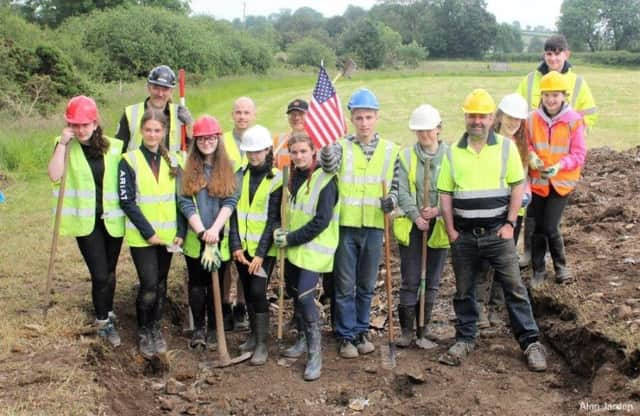

Three planes crashed in Monaghan during WW2 and in the near future parts of all three planes will be on display at the county’s museum thanks to the efforts of the excavation team.
Local aviation historian Jonny McNee is currently in the process of cleaning all the parts of the plane which were recovered.
Advertisement
Hide AdAdvertisement
Hide AdJonny, who works at Derry City and Strabane District Council, has always had an interest in WW2 aviation.
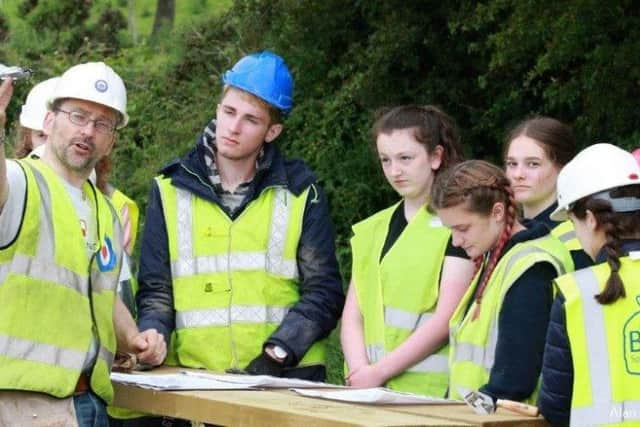

“It started as a child making model kits, sitting at the kitchen table gluing them and myself together and painting all the best stuff. It never really left me.”
As the son of a clergyman, Jonny also had an opportunity to meet parishioners who were veterans and spoke to them about their experience of flying planes, particularly when his family moved to the North West which has a ‘fantastic war time history’.
Jonny became something of a household name after he spent two years digging up a peat bog in Moneydarragh, Inishowen to recover the ‘Donegal Spitfire’.
Advertisement
Hide AdAdvertisement
Hide AdThe recovery was filmed by the BBC NI as part of the groundbreaking series ‘Dig WW2’, which was transmitted in 2012, and Jonny also wrote a book about the excavation.
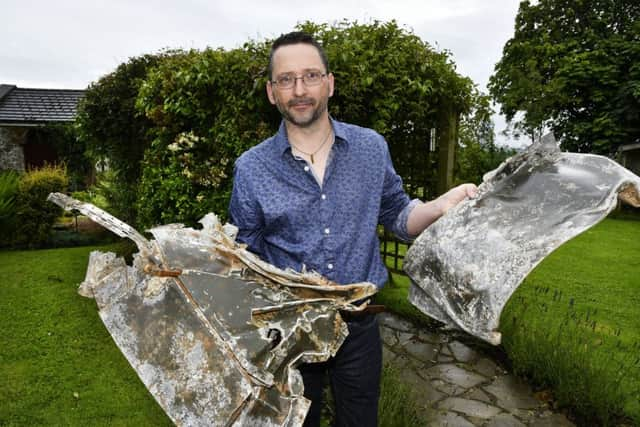

For the past number of years, Jonny has sought to involve the next generation in excavations. “They are learning this stuff now in school and it is seen as recent history. It’s interesting for them as they can relate back to it by speaking to grandparents or even great grand parents and ask about what they were doing at the time.
“With all due respect to traditional archaeology, you can’t ask a caveman why he dropped his axe where he did.”
The dig in Monaghan had been planned for ’quite a while’ and followed on from the discovery of a spitfire in the county in 2017.
Advertisement
Hide AdAdvertisement
Hide Ad“I have been working with Monaghan County Council and Monaghan County Museum curator Liam Bradley for the last four years. We have been trying to document what life was like in Monaghan, which was in neutral Ireland but in a border county where they were watching the other side of border and the rest of the free world trying to tear itself apart during the Second World War.”
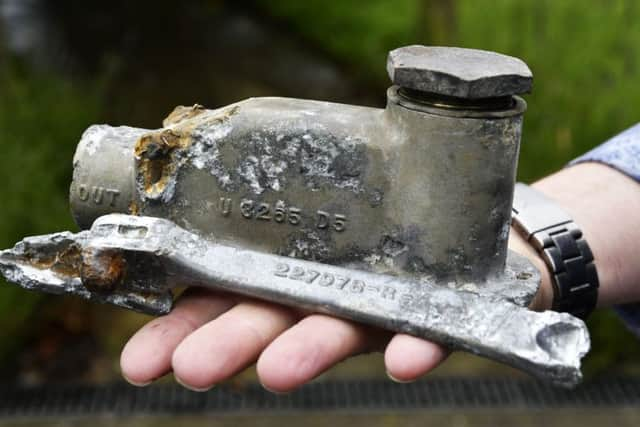

“In 2017 we did a Battle of Britain excavation in Emmyvale and worked with students from Foyle college, Ballybay Community College, Monaghan, and the spitfire we excavated was put on display in the museum in June last year in an exhibition titled ‘Monaghan Spitfire: Life on the Border with the World at War’.
“It documented what was life was like for people there during the War. Three planes crashed there and the Germans bombed the county on a couple of occasions. During the Belfast Blitz people sought refuge in Monaghan, which had to take many precautions like bobby trapping bridges and taking down signposts.”
Jonny said the pupils were really interested in the dig, but wanted to know more about the process of actually locating the crashed plane.
Advertisement
Hide AdAdvertisement
Hide AdThe excavation they took part in last month, for a P38 Lightning which crashed in December 1942, gave them the opportunity to do this.
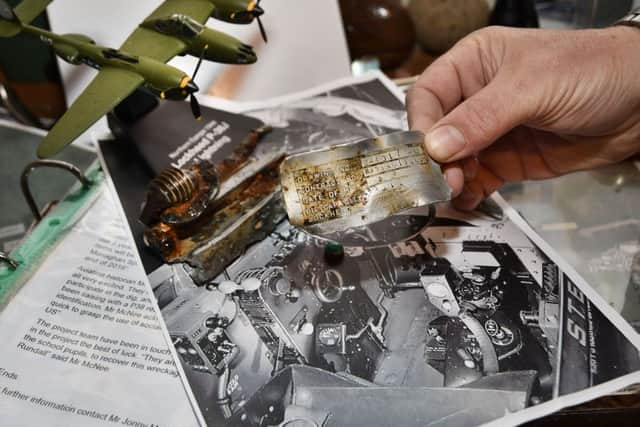

Most of the P38 Lightning had been taken away by the army after the crash, however parts still remained and there was enough to warrant a fully licensed excavation of the site.
“The pupils, who are all around 14 or 15-years-old, were involved in the whole process right from the outset. They went through the records, came out with us as we knocked on doors trying to find people who might remember the crash to narrow down exactly where it happened.”
Jonny said the students absolutely loved it.
“They were all so interested because they were doing WW2 studies at school and their teachers were brilliant, so motivated. In the field itself they got to use all the metal detectors, the ground penetrating radar which was being operated by friends from Queen’s University, GPS equipment and then they had a ball marking out the field where parts had been found.
“They learned so many different skills.”
Advertisement
Hide AdAdvertisement
Hide AdIt also allowed the pupils and the rest of the team to learn more about the human side of the War and about the pilot who crashed his plane.
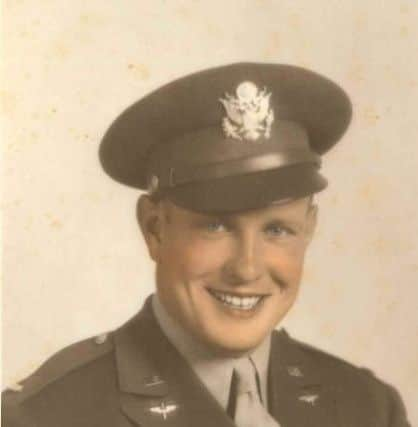

“The Lightning was flown by Second Lieutentant Milo Rundall of the 82nd Fighter group of the US Air Force. He came from Iowa, so we contacted the local paper and told them what we were doing.
“They were able to supply us with some information and we traced the pilot’s family. Second Lieutenant Rundall’s daughter Merryl got in touch with us and we learned more about him, although she did say he didn’t speak much about his WW2 experience until later in life.
“He was due to go out to Tunisia and on the night of the crash he had been taking his plane to the Lockheed base at Langford Lodge, close to Lough Neagh. On his flight back to Eglinton he got lost. It was December 17 and it was very dark and he crashed in County Monaghan at around 7pm.”
Advertisement
Hide AdAdvertisement
Hide AdSecond Lieutenant Rundall, who passed away in 2006, was based in Derry for a few short months during the war. His family told the team that he loved to fly the P38, even though it was quite complicated to handle and that he had crashed three in his career.
“His daughter told us that he often joked he cost the American government more money that it took to train him.”
Around a month after the crash, Rundall flew to Tunisia from Eglinton and he was shot down by German fighters.
“He bailed out and was captured by Tunisian locals who he thought were going to look after him,” Jonny explained. “However, when they stumbled across a German patrol the locals handed him over.”
Advertisement
Hide AdAdvertisement
Hide AdSecond Lieutenant Rundall was then taken to Stalag Luft III Prisoner of War camp and spent two and half years there. The camp is best known for two escape plots by Allied POWs, including one which was the inspiration for the film ‘The Great Escape’.
“He was a fluent German speaker and somehow acquired a set of peasant clothes whilst in the camp,” Jonny said.
“He managed to escape from the camp and he got around 100 miles away from the camp when he made the mistake of using the wrong form of German when asking for a ticket at a railway station. He was unable to produce any papers and the guards were called. Luckily he still had his camp uniform on underneath or he would have been shot on the spot for spying.”
The pilot was put in solitary confinement for a month and lost a lot of weight, something which his family said affected his health in later years.
Advertisement
Hide AdAdvertisement
Hide Ad“His daughter said he was a loving man and a great patriot but she could just imagine his reaction to us digging up his plane. Merryl was sure he would say ‘why would anyone want to go after my plane, I was just doing my job.’”
The parts recovered are expected to go on display in Co. Monaghan and Merryl is hoping to attend and also to visit her father’s old base.
Jonny said the dig allowed the team to settle a lot of things about the forensics of how the crash happened.
“We were able to test a number of scenarios, for example was the plane on fire, how did it go into the ground, does the debris match up with the records of the time. We can confirm there was no fire as there was no molten metal at all in the hole, there was no smell of aviation fuel either and we know that some of the long hard pieces were vertical so the plane went in almost vertically.”
Advertisement
Hide AdAdvertisement
Hide AdJonny paid tribute to the dedication and commitment of the pupils who took part in the project.
“They were out at silly o’clock Saturdays and during their summer holidays and it speaks volumes about how excited they were about taking part.
“The students did themselves, their schools and their families proud.”
Jonny revealed that the dig will feature in a BBC programme Digging for Britain and RTE were also there interviewing the pupils.
Advertisement
Hide AdAdvertisement
Hide AdHe said that being interviewed by the world’s media has allowed the young people to hone their communication skills too.
Jonny has another project on the back burner but says they do take a lot of time.
However, there is one plane at City of Derry Airport that has remained elusive which the historian hopes he is closing in on.
For the meantime he is focusing on getting the P38 Lightning ready for display.